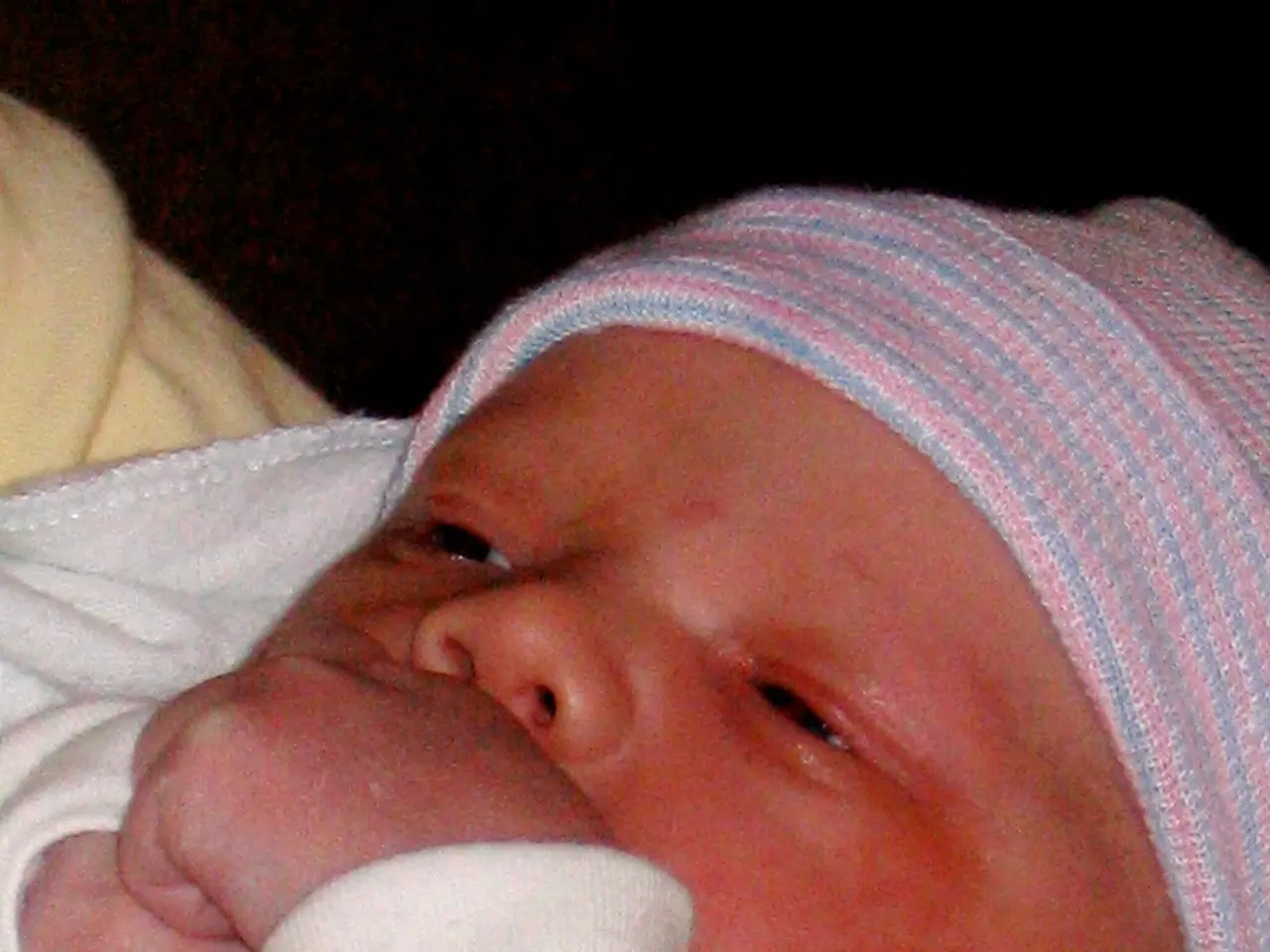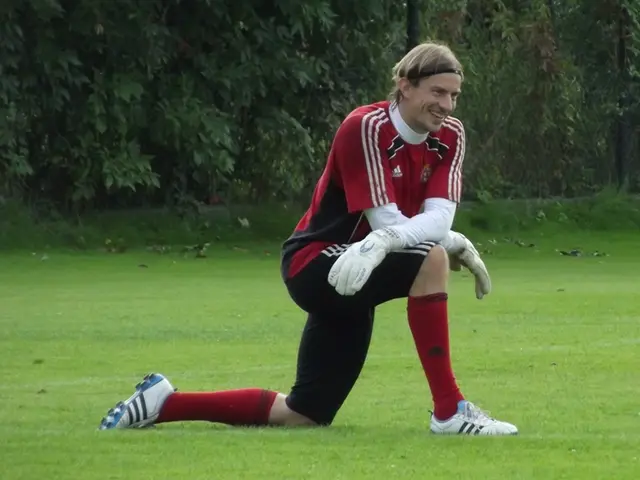Infant Lip Sores: Understanding Their Causes and When Medical Attention is Necessary
Article Title: Understanding and Managing Lip Blisters in Newborns
Newborns may occasionally develop fluid-filled blisters on their lips, a common occurrence that might cause concern for parents. Here's a guide to help you recognise and manage various types of lip blisters in newborns.
Sucking blisters are the most common lip blisters in newborns, caused by friction on the lips from feeding or thumb-sucking. These blisters typically appear within the first week or so after birth and show up as a solitary bubble on the upper or lower lip, sometimes looking dry or cracked. While they might be distressing, sucking blisters usually resolve on their own within 3-4 days. Improving the baby’s latch during breastfeeding or feeding position for bottle-feeding can help, and warm compresses can soothe the blisters. If sucking issues continue, temporarily switching to feeding using a cup, spoon, or syringe may be necessary[1][4].
On the other hand, cold sores (Herpes Simplex Virus) are less common but can be serious in newborns. Cold sores may be caused by the herpes simplex virus and can appear on or around the lips, possibly with fever or mouth inflammation. Cold sores might ooze a clear liquid and crust over, and may be accompanied by fussiness, reduced feeding, and other symptoms. If detected, prompt medical attention is essential[1][2].
Allergic reactions can also cause lip blisters in newborns. These may be accompanied by redness, swelling, or irritation. In such cases, it's crucial to stop exposure to the suspected allergen and consult a pediatrician for diagnosis and possible treatment[1].
Another condition to watch for is Hand, Foot, and Mouth Disease (HFMD), which can cause blisters or sores on lips, inside the mouth, hands, and feet, along with mild fever and malaise. Symptoms typically clear up in 7 to 10 days, but pain relief with acetaminophen or ibuprofen may be necessary. Avoid giving aspirin to children[5].
Impetigo, a bacterial infection, can also cause blisters or sores around the mouth and lips. These blisters may rupture, leaving a yellow crust. If suspected, a medical diagnosis is necessary, and usually topical or oral antibiotics prescribed by a doctor will be required[1].
Lastly, oral thrush (Candida infection) can manifest as white patches inside the mouth and on the lips, possibly causing discomfort. Prescription antifungal medications such as liquid nystatin for the baby, and antifungal creams for nursing mothers’ nipples to prevent reinfection, are typically used to treat oral thrush. Good hygiene and sterilising feeding items are essential to prevent recurrence[1][3].
In summary, while suck blisters and HFMD usually resolve without intensive treatment, cold sores, impetigo, allergic reactions, and thrush may require medical intervention depending on severity. Consulting a pediatrician is advised for diagnosis and appropriate treatment[1][3][5]. It's always best to err on the side of caution and seek professional advice when unsure.
Read also:
- Chest X-ray findings in heart failure: An overview
- Improvement indicators for pneumonia: Recognizing the signs and additional information
- Seniors with no offspring in Kerala are entitled to legal maintenance, only from their direct heirs, as ruled by the High Court.
- Chest Pain Connected with Hiatal Hernia: Remedies and When to Request Assistance





